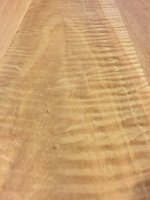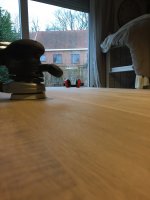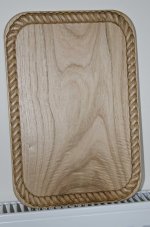Dear all,
Today I ordered some oak boards that are to be used as a surface for a table.
2 of the planks show a wavy wood grain pattern as you can see in attached pictures.
What surface treatment would you suggest to minimize this effect ?
Many thanks in advance for any help or suggestions
Today I ordered some oak boards that are to be used as a surface for a table.
2 of the planks show a wavy wood grain pattern as you can see in attached pictures.
What surface treatment would you suggest to minimize this effect ?
Many thanks in advance for any help or suggestions






